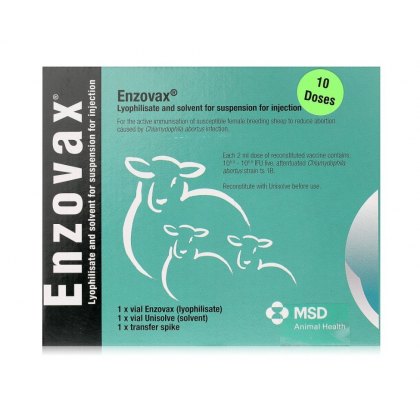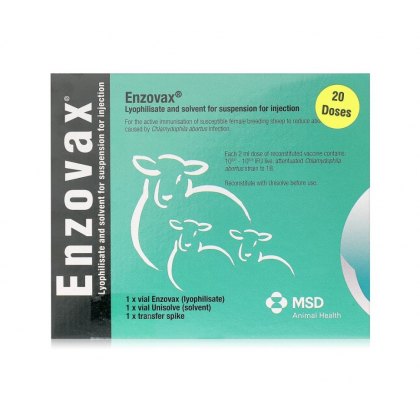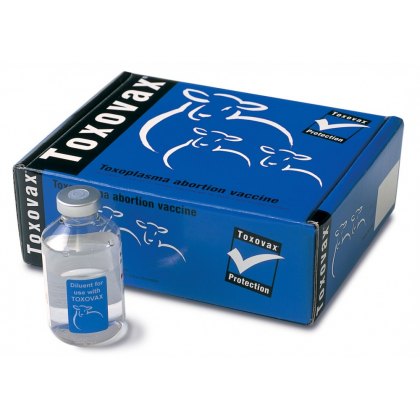The Flockmaster’s Guide to Abortion and Vaccination - MSD
INTRODUCTION
Lambing percentage is one of the key measures in determining flock health and performance: a small improvement can increase income. Many of the lambs lost are the victims of infectious diseases that are preventable. The most significant infections causing abortion in sheep have been identified and can be controlled using cost-effective practical solutions.
MSD have produced a booklet which we have replicated here which explains the important facts about the two most common diseases, including their prevalence, tips on diagnosis and how to cope with an acute outbreak. Most importantly, it shows how a sensible approach to their control can achieve long-term financial benefits.
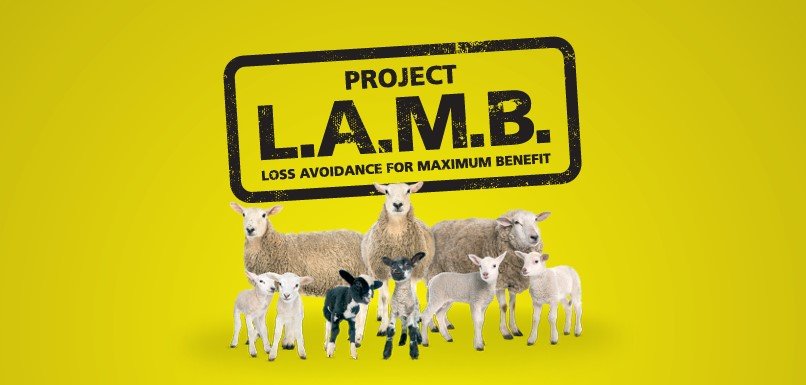
Project L.A.M.B.
The essence of Project LAMB is a proactive approach to sustaining a healthy flock. It is an initiative designed to:
- help produce healthy lambs
- close the gap between scanning % and lambs reared
- focus on flock well-being
- reduce time and resources needed to treat sick sheep
- meet the demands of both the consumer and the food chain
Talk to your sheep health advisor to find out more.
CLOSING THE GAP BETWEEN SCANNING AND REARING PERCENTAGE
Most lowland flocks could achieve a lambing percentage of over 180%. All flocks should be looking to reduce abortions to less than 2% and the barren rate to less than 5%. A straightforward way to maximise productivity is to reduce lamb losses.

WHY AREN’T YOU GETTING MORE LAMBS?
Undiagnosed infectious abortion agents within a flock can have a significant impact on the number of barren ewes, ewe mortality and lambs born alive and strong.
There are a number of forms of abortion, and obtaining an accurate diagnosis is important, so consult your vet at the very first sign of any abortion.
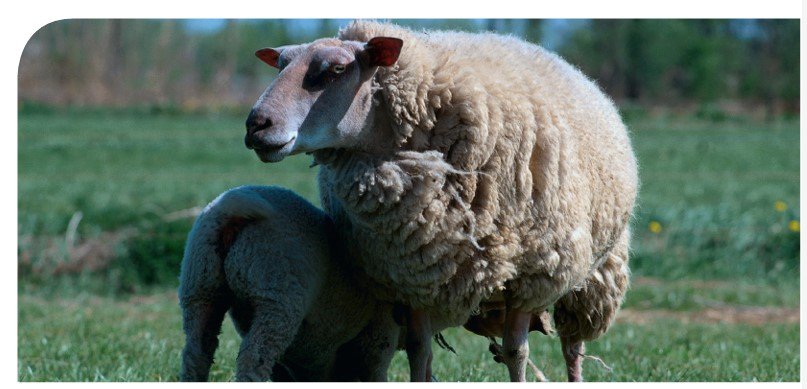
WHEN ARE LAMBS LOST?
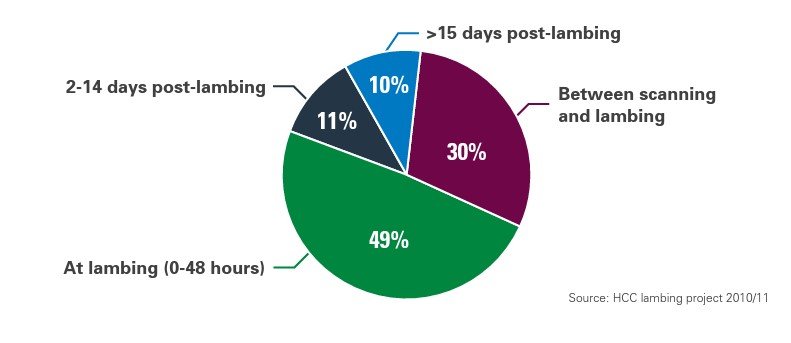
The cause of the losses is often an infection in the ewe during pregnancy which may be responsible for the barren ewe seen at scanning and not just the more obvious abortions.
Anecdotally, as well as weak and sickly lambs that die soon after birth, barren ewes and abortion rates between 5% and 10% are often tolerated.
However, anything above 2% is likely to be due to an infectious cause and should be investigated.
Furthermore, those flocks with barren and abortion rates of 2% and less need to consider toxoplasmosis and enzootic abortion as continuing threats which could potentially strike the flock in any year subsequently without the necessary protection.
MOST COMMONLY DIAGNOSED INFECTIOUS CAUSES OF ABORTION
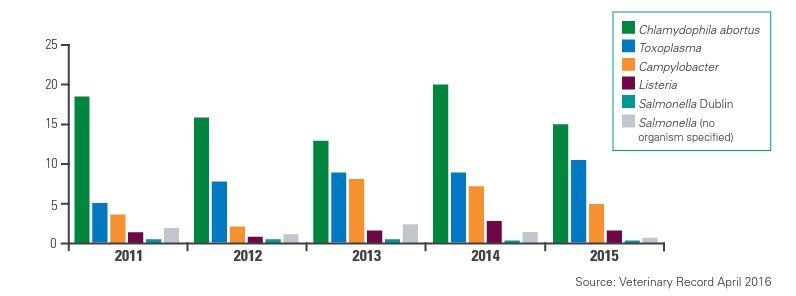
Just two infectious diseases, toxoplasmosis and enzootic abortion (EAE) account for nearly two-thirds of all abortions diagnosed in veterinary laboratories nationwide (although the real impact of toxoplasmosis is much greater as it is the cause of early embryonic loss and barrenness which may be undetected). There is, however, evidence that they are even more prevalent.
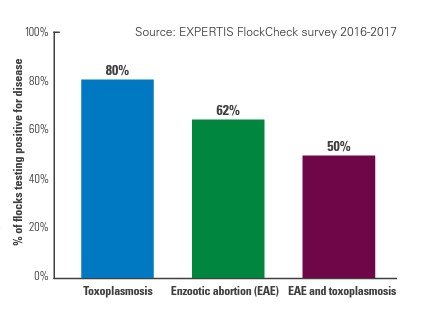
According to the 2016 and 2017 diagnostic results from the MSD Animal Health FlockCheck scheme, on average over 80% of submitted blood samples tested positive for toxoplasmosis and more than 62% were positive for enzootic abortion (EAE). Around 50% of samples were positive for both.
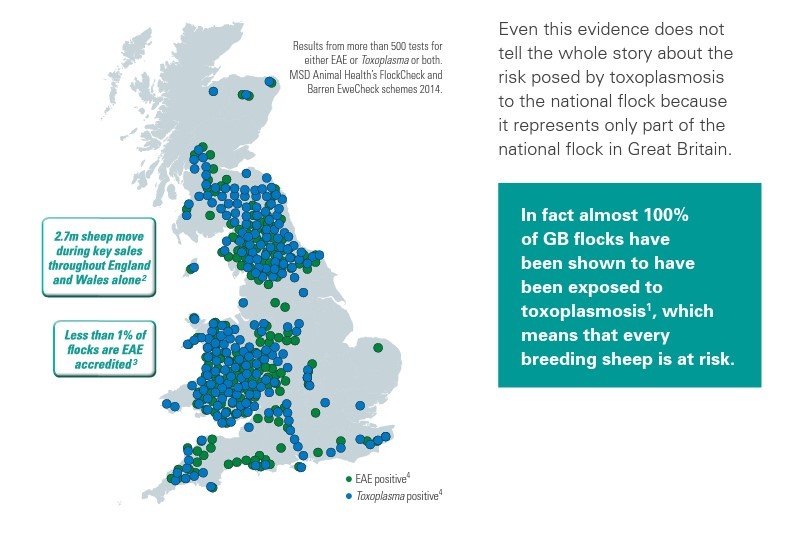
SUMMARY OF THE MAIN INFECTIONS
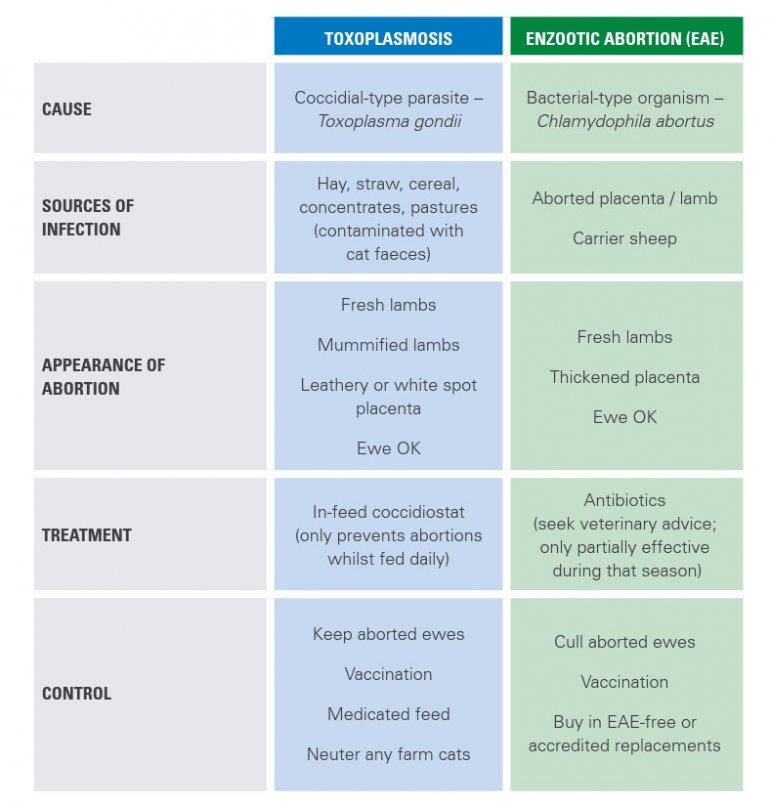
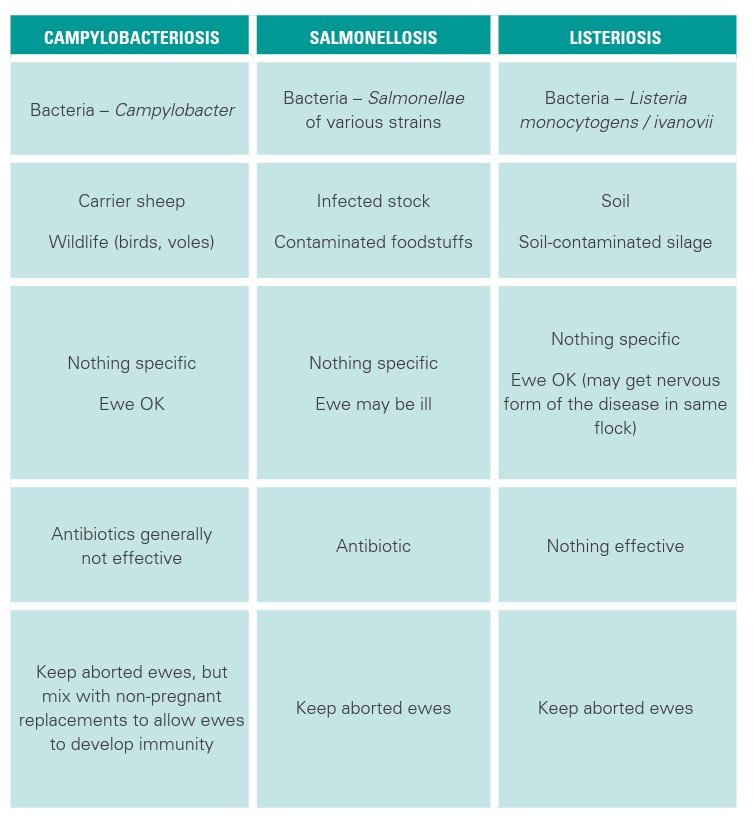
Unfortunately, there are no licensed vaccines in the UK for the other diseases commonly found to cause abortion in sheep.
Talk to your vet to ensure that you have an accurate diagnosis, together with a plan to address the problem.
Hygiene and husbandry become very important in reducing the spread of the disease.
TOXOPLASMOSIS
WHERE DOES IT COME FROM?
The source of the eggs is most commonly contamination of the environment by cat faeces: in barns, feed stores, bedding, manure or pasture. A single cat dropping can contain enough eggs to infect more than 100 ewes. Eggs can survive on-farm for well over a year. Toxoplasma eggs are then eaten by ewes in feed, forage or on pasture. Toxoplasma is not commonly passed from sheep to sheep.
WHOSE FLOCK IS AT RISK?
Almost 100% of flocks have been shown to have been exposed to toxoplasmosis1. This ubiquitous parasite is a serious risk to all flocks in the UK. It is in the environment and it only takes one brief visit from a cat to significantly contaminate the farm or pasture.
WHAT EFFECT DOES IT HAVE?
- Losses both during and after pregnancy
- Barrenness
- Reabsorptions
- Mummified foetuses
- Abortions
- Stillbirths
- Weakly lambs
CAN I CONTROL IT THROUGH MANAGEMENT?
The only way to effectively avoid toxoplasmosis is through vaccination. Feeding a coccidiostat can be of benefit but, as toxoplasmosis can strike at any time, in-feed medication needs to be administered throughout the last two-thirds of pregnancy, and can therefore be financially prohibitive and difficult to dose correctly for individuals.
TRANSMISSION OF TOXOPLASMA GONDII BETWEEN CATS AND SHEEP
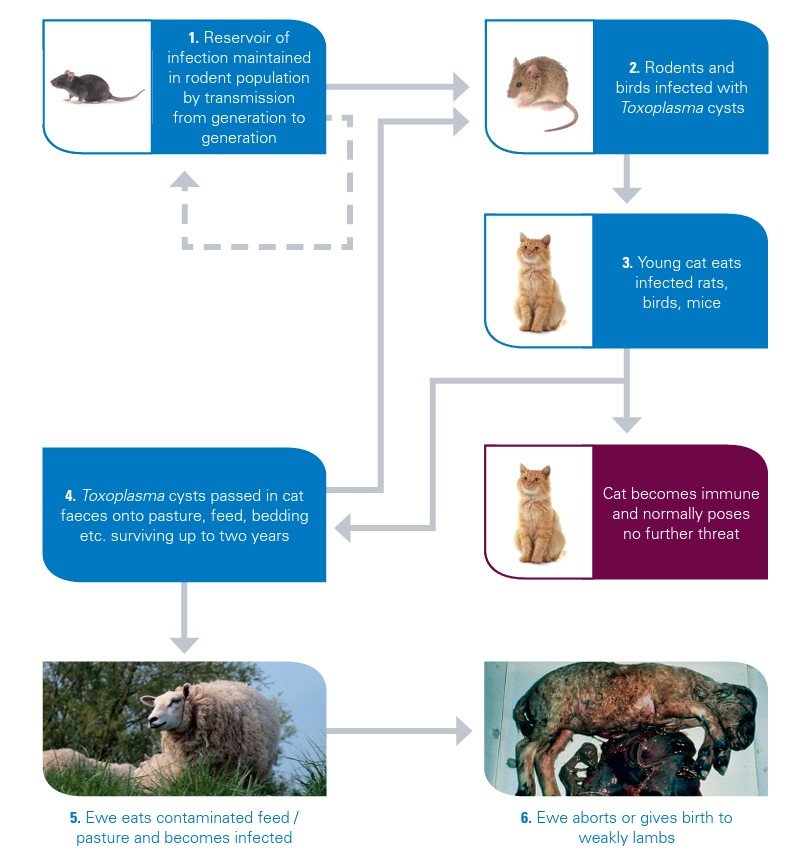
ENZOOTIC ABORTION (EAE)
WHAT CAUSES IT?
Enzootic abortion is caused by a bacteria-type organism called Chlamydophila abortus. The disease is also a zoonosis: it can cause abortion in women, and flu-like symptoms in both children and adults. Considerable care should therefore be taken when handling sheep during and after lambing.
WHERE DOES IT COME FROM?
- The disease usually arrives on farm when infected replacements are bought in
- Wildlife can also be implicated by carrying infected placentae from one farm to another
- The organisms are passed from ewe to ewe in infected afterbirth, on new lambs and in vaginal discharges for up to two weeks post-lambing.
- Lambs can also be born already infected from mothers carrying the disease.
THE MAJOR PROBLEM WITH EAE: LATENCY
- When a ewe aborts she sheds large numbers of the EAE organism.
- These can infect any ewe or lamb that comes into contact with them – BUT signs of EAE will not necessarily show in newly infected animals during that same lambing season and there is no test to identify them.
- The organism remains dormant in the body until the next lambing.
- In infected lambs it can be longer, e.g. in shearlings two years after infection.
- Approximately three weeks before the next lambing the placenta becomes inflamed and abortion occurs.
WHOSE FLOCK IS AT RISK?
- Anyone who buys in replacements from a source that isn’t known to be EAE-free
- Unvaccinated flocks.
- Outdoor lambing flocks.
- Hefted sheep.
WHAT EFFECT DOES IT HAVE?
At its most obvious, EAE can cause devastating abortion storms, often affecting approximately 25% of ewes. This happens when the disease attacks a flock containing many susceptible, previously uninfected sheep. However, if a large proportion of the flock is already infected it will cause ongoing losses of around 5% a year.
CAN I CONTROL IT THROUGH MANAGEMENT?
Once your flock has the disease, it is very unlikely that it will ever disappear completely due to latency. Tests can only identify an infected ewe after she has aborted and spread the disease still further. Even a closed flock with good bio-security is vulnerable to material brought on-farm by scavengers; and of course, these are the flocks that are most at risk of a devastating abortion storm.
Only a vaccination programme can control its effects.
ENZOOTIC ABORTION OF EWES – SPREAD OF INFECTION
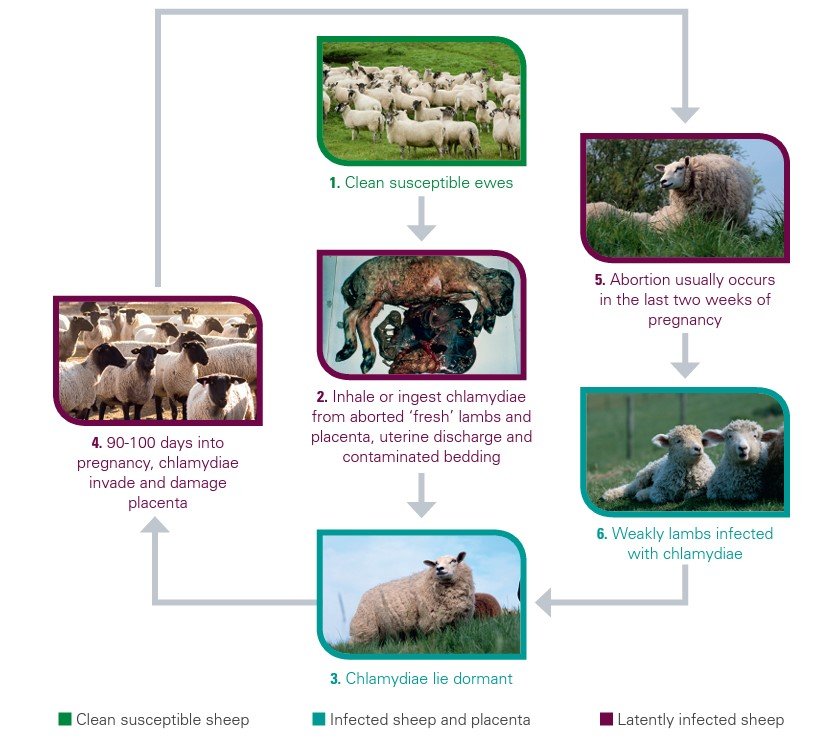
IF THE DIAGNOSIS IS TOXOPLASMOSIS
Unfortunately, little can be done this season. Consult your veterinary surgeon for advice on whether medication would benefit your flock. The aborted ewe need not be isolated as the disease cannot spread from her to other ewes.
TOXOPLASMOSIS CONTROL
Whole flock vaccination with Toxovax is recommended and cost-effective. Then vaccinate all replacements as they enter the flock. Immunity can be boosted by natural challenge, so often ewes may only need one vaccination in their lifetime. For advice on boosters, contact your veterinary surgeon.
Unlike EAE, toxoplasmosis cannot be passed from sheep to sheep. Older ewes are more likely to have been previously exposed to the disease and therefore will possess some immunity. Hence vaccinating the younger animals in the flock must be the first priority, although for maximum disease control whole flock vaccination is the gold standard.
IF THE DIAGNOSIS IS EAE
- Keep aborted ewes separate from the rest of the flock, especially any future replacements
- Do not foster lambs onto aborted ewes
- Ask your vet about antibiotic injections for EAE. It won’t stop the outbreak completely, nor will it prevent other ewes from being infected and aborting next year, but it can reduce the number of abortions in the current season
- Look to future control with Enzovax
EAE CONTROL
Vaccination with Enzovax will effectively control EAE within your flock.
As you can’t identify latently infected ewes, any ewe may pose a threat of infection to another. It is best to vaccinate the entire flock in the first year. Thereafter, vaccinate all replacements, regardless of source. Generally, only one vaccination is needed for the lifetime of the ewe. Re-vaccination is recommended every 3-4 years depending on farm management practices and conditions.
In any infected flock, a proportion of ewes will already be latently infected. Some of these ewes may still abort at the first lambing, because the infection is established in the ewe’s womb, but vaccination has been shown to reduce the number of abortions in these ewes.
INFECTION VERSUS PROTECTION
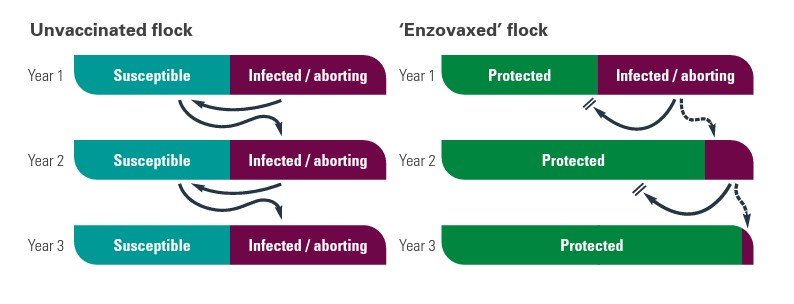
VACCINATION – THE BENEFITS
The costs of lowered productivity are so great that vaccination is a cost-effective route to the control of these diseases. Many farmers see benefits where they didn’t realise there was a problem, having healthier and more viable lambs born.
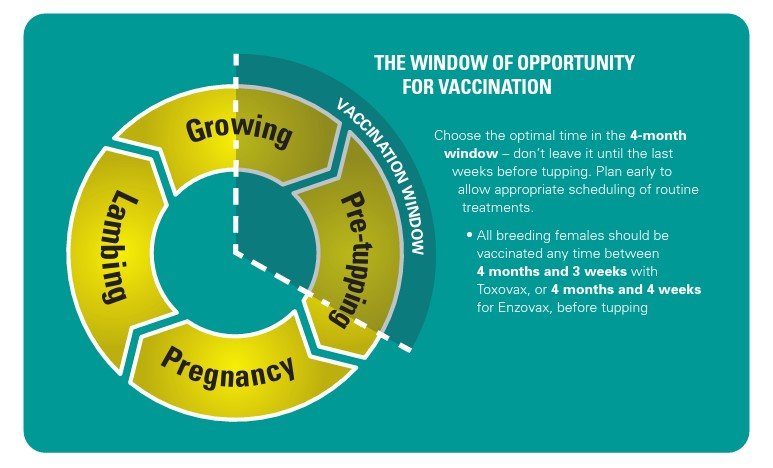
www.msd-animal-health.co.uk/sheep/sheep-pom-v-vaccines.aspx
For further advice about toxoplasmosis or EAE and the vaccines available to assist in their control, please contact your veterinary surgeon. Additionally, contact MSD Animal Health’s product support team on 01908 685685.
ACTION IN THE FACE OF AN OUTBREAK
The devastating impact of Toxoplasma or enzootic abortions will have been experienced by many. Abortion storms are caused when EAE affects a largely clean, uninfected flock which is unvaccinated. The effects of Toxoplasma on vulnerable flocks are often insidious and therefore harder to identify. However, abortion storms can occur in a naïve flock.
These effects can be minimised by the following steps:
- If any abortion occurs, act fast (it may be the beginning of an enzootic abortion storm). The earlier you determine the cause and treat other ewes, the more lambs may be saved
- Isolate and mark the affected ewe
- Contact your vet
- Collect freshly aborted lambs and placentae if present; put in separate, clean bags and take to your local APHA Investigation Centre / SAC Disease Surveillance Centre. Two or three will allow you to identify most of the possible infectious causes
- If aborted material is not available, ask your vet to take blood samples for Toxoplasma and EAE. These samples must be taken within 4 months of the abortion to gain relevant results. Note that you cannot blood test for some of the less common causes. Ask your vet about MSD Animal Health’s FlockCheck
- Be careful when handling problem ewes and aborted material, and always wash your hands afterwards. Pregnant women and children are particularly at risk if infected
- Dispose of aborted material carefully and appropriately
- MSD Animal Health provides complimentary blood testing for both EAE and toxoplasmosis through the FlockCheck scheme
from £122.20 ex VATfrom £146.64 inc VAT- 1st June 2023

